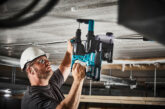
The team at The Electrotechnical Skills Partnership (TESP) explain more about the process involved with the Experienced Worker Assessment and why it has been introduced to the industry.
It’s long been a talking point across the industry that not all electricians are qualified to the same level – some will have completed an apprenticeship or gained a Level 3 NVQ, while some have a range of theory-based certificates.
There will be many who genuinely thought their college course led to ‘qualified’ status, only to find it didn’t. Others, worryingly, have undertaken short courses before putting themselves on the tools.
Unfortunately, as the electrical industry isn’t one that is centrally regulated, the fact that anyone can call themselves an electrician is a continual source of angst for those who may have trained via the ‘proper’ routes and those needing to recruit genuinely qualified electricians.
As an industry we can either complain about unqualified electricians indefinitely, or try to do something about it.
A solution to the issue
To help address the situation, The Electrotechnical Skills Partnership (TESP) has launched the Experienced Worker Assessment (EWA) for those who have been working as an ‘electrician’ for a number of years, but have never gained the full Level 3 qualification.
The EWA is based on the same content as the electrotechnical apprenticeship, so new entrants and existing workers are being assessed and accredited against the same industry standard, creating a level playing field for all those becoming qualified.
Importantly, the EWA recognises your existing qualifications, skills and experience so you’ll only need to fill in any gaps.
What does the EWA entail?
To complete the whole assessment, you’ll need to gain the Experienced Worker Qualification, and also take the AM2E Assessment, which mirrors the AM2S assessment taken by apprentices at the end of their training.
The Experienced Worker Qualification comprises six Level 3 practical performance units, the 18th Edition Wiring Regulations and the Level 3 Initial Verification Unit.
How does it work?
This isn’t a route for new entrants. You need to have worked in the industry full time for typically five years or more, because you’re required to demonstrate comprehensive knowledge and practical skills which is equivalent to the Level 3 apprenticeship in order to qualify.
1. First you need to complete a Skills Scan – this is essentially a self-assessment process that maps out what skills and knowledge you should have already, to work out if the EWA is right for you.
2. If you proceed, you need to contact an EWA training provider accredited by City & Guild or EAL, to register and start the assessment process. You should provide them with the Skills Scan that you’ve completed.
3. The training provider will first go through a process called ‘Recognition of Prior Learning’ – this is where your existing qualifications, skills and experience are assessed against the EWA qualification criteria. For instance, if you already hold the BS 7671 and Initial Verification qualifications, you won’t need to repeat these, making for a shorter overall assessment process.
4. You’ll then fill in any gaps needed to complete the Experienced Worker qualification. This will be done via a combination of on-site assessment, portfolio building and (if required) undertaking the BS 7671 and IV qualifications. The price and duration of the Experienced Worker Assessment will be adjusted to reflect the elements you require.
5. Once you’ve gained the Experienced Worker qualification, you’ll need to undertake the AM2E Assessment at an independent NET centre. Once you successfully gain the AM2E, the Experienced Worker Assessment process is complete.
Upon completion of this process, you’ll then meet the criteria for an ECS gold card application.
When is it not the right route?
If you’ve got significant gaps in your technical knowledge or practical skills, this isn’t the right route for you. The Skills Scan maps out exactly what level you should be working at and also covers the skills that you’ll need to demonstrate in person during the AM2E Assessment.
Candidates need to be realistic – don’t tick ‘Adequate’ or ‘Extensive’ in the Skills Scan if you know you don’t have the breadth of skills or knowledge in a particular area. When it comes to taking the practical AM2E assessment, you’re unlikely to pass.
What are my other options?
You might need to undertake some further training or study to fill any knowledge gaps. Make sure that any training or qualifications can be recognised against the EWA requirements.
If it’s likely to take at least 12 months to gain sufficient practical experience, consider an apprenticeship. There are no age restrictions, and any training and the cost of the AM2S will be funded.
If you can’t get an apprenticeship, think about whether it’s possible to gain the experience by taking on different tasks at work – talk to your employer about possible options. If you’re self-employed, consider whether it’s possible to broaden the work you undertake to fill the gaps.
Whilst the ultimate industry goal is for all those working as an electrician to be fully qualified, we also need to recognise that this isn’t currently the case. The introduction of the EWA brings a new solution for those who want to have their skills and experience recognised and become fully qualified in the eyes of the industry.
Download the Skills Scan and find out more about the EWA by clicking here








